By Vina Paramitha & Natasha Effendy

Chinese New Year is just around the corner! This festival celebrates the beginning of a new year based on the traditional Chinese Lunar calendar, which makes it an extremely important holiday in China. However, as the population and culture of ethnic Chinese continue to expand globally, Chinese New Year is also celebrated in many other Asian countries, such as Indonesia, Singapore, Thailand, Myanmar, and of course, our very own Malaysia.
To welcome the Year of the Rat, we have prepared a pocket guide that compiles everything you need to know about Chinese New Year — from its unique traditions and superstitions, to a tasty list of snacks traditionally enjoyed during this festive holiday!
PART 1:
YOUR GUIDE TO TRADITIONS & SUPERSTITIONS OF CHINESE NEW YEAR!
Chinese New Year is often associated with a lot of traditions and superstitions — most of which you have probably heard from your own family during reunion dinners. While every family has its own way of celebrating the new year, there are always some customs that are practised in every home and some myths passed down from one generation to the next as if they were some kind of a legacy. And so, to kickstart your festive mood, we have prepared just the right guide for you to know more about Chinese New Year and its unique history!
1. RED ENVELOPES
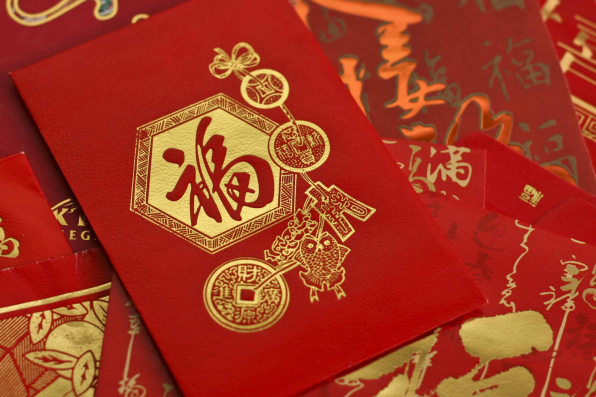
When you think of Chinese New Year, what’s the first thing that comes to mind? Do you see the colour red that seems to be the trademark of the festival? Or do you smell the tempting scent of fresh dollar bills? Or perhaps… both?
That’s right. I think there’s no denying that most of us here are looking forward to Chinese New Year for these beautiful red envelopes — and the no-less-beautiful goodies inside them, of course. A red envelope (Chinese: hóng bāo; Hokkien: ang pow) is a form of monetary gift usually presented during weddings, birthdays, and festivals such as Chinese New Year. Typically, red envelopes are gifted by married couples to the unmarried in the family, most of whom are children or… you know… (broke) college students. According to traditional Chinese belief, the act of giving money during the new year is considered to be of good luck to both the giver and receiver: which is why every time the phrase “恭喜发财, 红包拿来” (gōng xǐ fā cái, hóng bāo ná lái)* comes from the receiver, the giver would not turn down the request for they are said to be derived from luck throughout the year if they were to do so. I guess this is why most people prefer to not get married nowadays, huh? Haha just kidding… unless…?
* Literal translation: Wishing you wealth and prosperity, hand over the red envelope!
2. LION DANCE & DRAGON DANCE
The lion dance (Chinese: wǔ shī) and dragon dance (Chinese: wǔ lóng) are both forms of traditional dance in Chinese culture, commonly performed during festivals such as Chinese New Year. A relative once told me that according to traditional Chinese belief, the lion and dragon dance tells a story of warding off evil spirits, in which the lion represents the evil, while the dragon — a legendary creature in Chinese mythology — represents the power, strength, and fortune to repel the evil.
The lion dance has been adapted in many other Asian countries, such as Vietnam (múa lân), Japan (shishi-mai), Korea (sanye), and Indonesia (barongsai), all of which involve two dancers mimicking a lion’s movements in a costume. On the other hand, the dragon dance requires many people holding onto a longer costume using sticks or poles. Though each of these dances operate differently, both of them do share a similarity: they would always be accompanied by the sound of booming drums and crashing cymbals, something which never fails to turn the heads of onlookers wanting to feast their eyes on an intense yet exciting visual performance.
3. DECORATIONS
The days when you’d be counting down to Chinese New Year would also be the days when you’d have to wake up early, sweep away all the dust in every corner of your house, and set up decorations everywhere (like, everywhere).
- Chinese Lanterns

Chinese lanterns are probably — no, definitely — the most common decoration to be put up during Chinese New Year. I mean, you can literally see them hanging everywhere! Your house, your neighbour’s house, office buildings, the streets… yup, you get the idea. You just can’t hide from these lanterns. But that’s not a bad thing! Though its function as a light source in ancient times has now evolved to be a simple decoration, Chinese lanterns have kept its value throughout the ages as symbols of joy and good fortune. Who knows? Maybe the more lanterns you see, the more happiness and luck you’ll have this year!
- Chinese Couplets

A couplet (Chinese: duì lián) is a form of Chinese poetry meticulously calligraphed on red paper using black ink. During Chinese New Year, you would normally see them pasted on doors in pairs. Otherwise, they would be made into hanging scrolls as a form of interior decoration. Each of the couplets usually has seven characters, though there are also some with four-character idioms. Either way, all the strokes brushed on the paper would express the same thing: hopeful thoughts and well wishes for the coming year.
- Upside Down 福 (fú)

福 (fú). I’m sure you have seen this character before, right? Meaning “good luck” or “good fortune”, this Chinese character is usually drawn or printed on a square piece of paper — well, diamond, to be precise, since it’s turned at a 45° angle. You’d normally see them stuck on doors, windows, walls… or any other flat surface that seems appropriate. What I’m not sure of is whether you know the reason why this character is mostly pasted upside down, just like what you’re seeing in the picture above. If you do know, good for you! If you don’t, well, let me entertain you with a story…
Once upon a time, on the first day of Chinese New Year, a family mistakenly attached their fú upside down. When their first guest knocked on the family’s door and saw the upside-down character, they remarked, “你们的福倒了!” (nǐ men de fú dào le)*.
* Literal translation: Your fú is upside down!
In this case, the character 倒 (dào) can mean “to invert”, but it can also mean “to pour out”. Therefore, the guest’s remark can also mean “your fú has been poured out”, or interpreted as “your good luck/fortune has been poured upon you”. Even though it started as a careless mistake, the legend of the upside-down fú has been passed down through many generations as a symbol of luck being “poured out” during the new year.
PART 2:
YOUR GUIDE TO TRADITIONAL CHINESE NEW YEAR SNACKS!
Chinese New Year snacks are often a staple in many homes. They would either be handmade with extra care or bought from stores. Ranging from sweet to salty flavours, they can be found carefully arranged in both big and small jars with the telltale red lids. Other than their different textures, they are universally loved for how bite-sized they are… meaning, you can just pop them into your mouth and feel the unique flavours burst on your tongue. Unfortunately, they may not be available in every home, so we are here to teach you the eight most common Chinese New Year snacks you can find during the festive season.
1. PINEAPPLE TARTS
Ah, good old pineapple tarts. They are a timeless, widely-adored
snack that can be pretty hard to resist, but in reality, hard to make. I mean, how can you not say no to the buttery, melt-in-your-mouth crust and the sweet, tart (pun intended), and flaky pineapple filling? In a Hokkien setting, pineapples are often symbolic of prosperity and good fortune, hence the consumption of the treats. Other than the usual shape of having the pastry rolled around a cylindrical filling, pineapple tarts may also appear in the shape of sunflowers where a ball of pineapple filling is placed on a flower-shaped buttery crust.
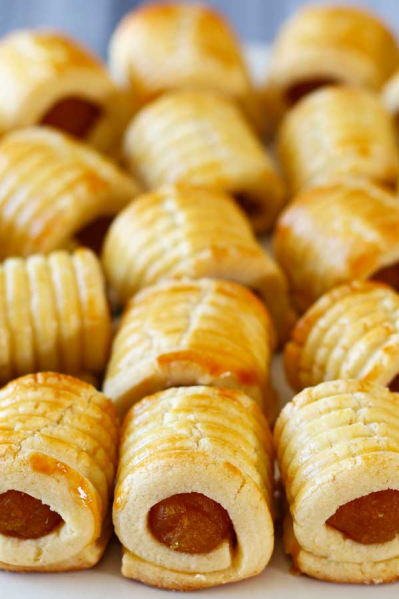
2. ARROWHEAD CHIPS
Also known as “ngaku”, this is a snack that’s neither sweet nor salty. In fact, it’s characterised by a more bitter, yet neutral taste, and the crunchy texture is what makes it addictive to eat. A little too addictive, actually. To make this snack, the process is said to be meticulous due to the skinning of the arrowhead vegetable, followed by the slicing and constant frying of the chips. In fact, the vegetable is often said to be associated with a good life, and is typically only offered to close relatives. Many people tend to get sick with a sore throat after eating too much, so remember to drink water!
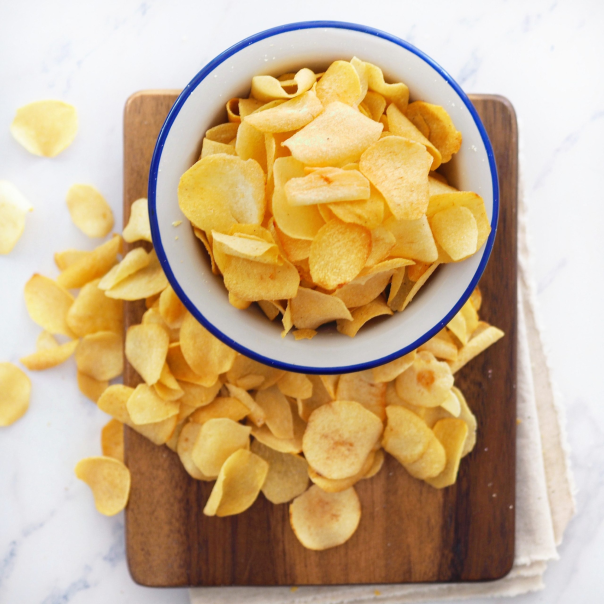
3. KUIH BANGKIT
Kuih Bangkit is yet another sweet treat you can expect during Chinese New Year. They are coconut cream cookies that are white and can be extremely powdery. That is, they are easy to break and can get everywhere, so take caution when you eat them! They also come in a variety of shapes, including flowers and animals (e.g. a rabbit), and there is usually a red dot in the centre. Very much like the crust of pineapple tarts, they crumble and melt in your mouth easily, but comes with a sweet kick. Plus, they are light in texture, and just too adorable to look at!

4. SHRIMP/CHICKEN FLOSS ROLLS
Shrimp rolls are these mini, bite-sized rolls filled with dried shrimp that can come spicy at times. It’s made of spring roll skin that’s stuffed with a filling that’s basically a blended mix of dried shrimp, spices and a belacan (shrimp paste) sambal. Once it is tightly wrapped, its fried in hot oil. They come packed with a satisfying crunch with each bite, and the fragrant flavours help elevate the flavour. If it’s not dried shrimp, it would be stuffed with chicken floss. On that note, chicken floss is a dried meat product that comes in this wool-like texture. For first-timers, don’t be intimidated by it; it tastes wonderful!
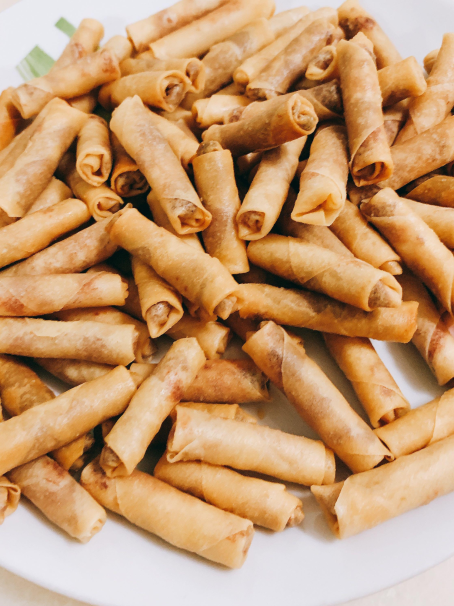
5. LOVE LETTERS (KUE KAPIT)
No, it doesn’t involve you eating paper for the holiday. Instead, “love letters” are these crispy, egg-roll wafers that are cooked in a circular metal mould embellished with patterns, over a charcoal fire and carefully folded afterwards. They are pretty fragile, and can break apart into broken, little layers. Shape wise, they may come rolled up or they may be folded into quarters. In Malay terms, they are known as kue kapit, and are said to have Indonesian origins, but with Dutch connections. Either way, they are scrumptious.

6. NIAN GAO (年糕)
Directly translated as “Year Cake”, Nian Gao is made of glutinous rice flour and is traditionally eaten for good luck. It’s typically sweet, and texture-wise, it’s chewy, sticky and stretchy. Other than that, they are usually a gift item during the auspicious holiday, and traditionally, they come in a round lotus-leaf container with a shiny sticker on top. This sticker usually bears the Chinese character of 福 to mean prosperity. They are cooked in a number of ways (depending on the country), including steamed and pan-fried. However, in Malaysia, on days that are not Chinese New Year, a number of road stalls or kopitiams (hawker centres) combines them with slices of yam and sweet potato, coats them with batter and deep-fries the whole thing as a local, greasy snack.
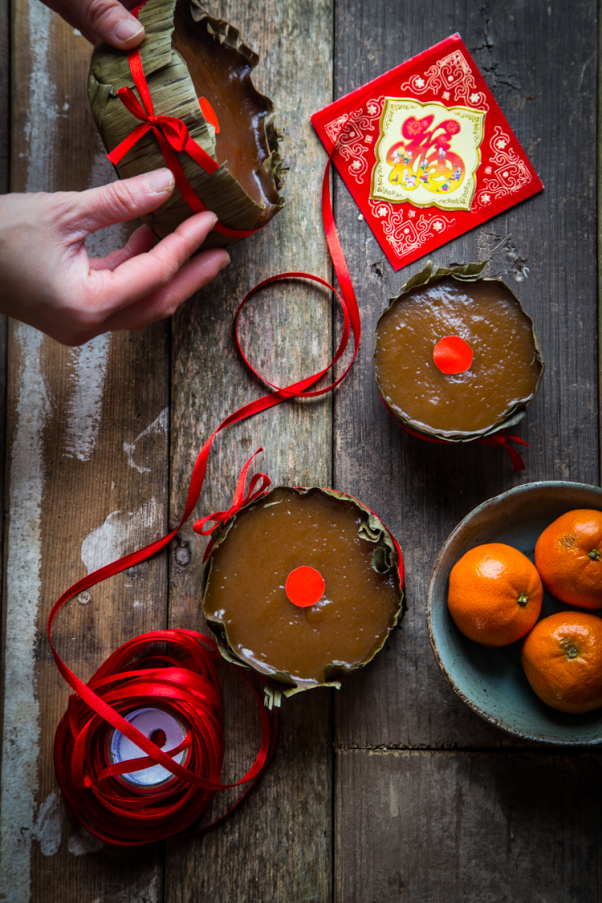
7. BAKKWA
Bakkwa (or rougan / 肉干) is a traditional Chinese dried meat product that is often eaten during Chinese New Year. Very similar to jerky, it’s packed with a sweet and salty flavour, and it’s typically in the shape of a square that has burnt edges. It coats your fingers in a sticky, greasy sauce, and the texture is mildly chewy. Bakkwa is usually made of pork (hence the “bak” in its name), but in Malaysia, there’s also the chicken version of bakkwa. Being flattened and processed meat, it can be a little fatty at times, but for some of us, it’s a guilty pleasure. During Chinese New Year, bakkwa is given as gifts to other people, hence its relevance. However, bakkwa can still be eaten outside the holiday with an omelette, chilli sauce and meat floss between two slices of toasted bread. Delicious!
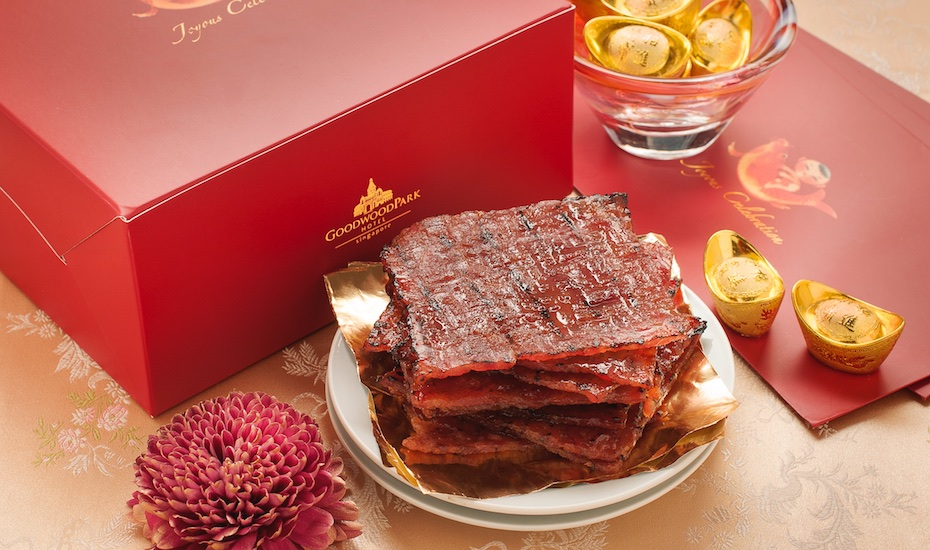
8. PEANUT COOKIES
Last but not least, we’ve got the peanut cookies. Just like any other cookie, it has the crumbly, sweet effect we all know and love. But this cookie is often part of Chinese New Year, and it’s pretty self-explanatory to say that it tastes like peanuts. However, while the cookie may be a bit sweet, the slightly salty tang from the peanuts helps to balance it out. Most peanut cookies are usually topped off with the nut itself, as well as a shiny egg wash. Though the cookie seems to lean towards a plain, vanilla side, the cookie is compensated with a rich taste that – for sure – nut lovers would enjoy.

***
That’s all folks! I hope our pocket guide will help you understand and maintain Chinese New Year traditions throughout the auspicious holiday. While you can gorge yourself on the snacks, don’t forget to drink a lot of water. At the same time, be respectful to the customs and to your elders. Outshine everyone with your brightest red clothes, and don’t shy away from blasting festive songs and singing them at the top of your lungs. Enjoy the company of your friends and family, and dodge uncomfortable questions politely while you can. Finally, if the opportunity arises, collect as many red packets as you can! We wish you a Happy Chinese New Year! Gong Xi! 恭喜!






